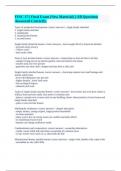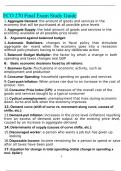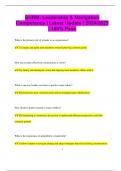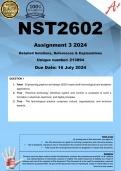Exam (elaborations)
FINC 371 Final Exam (New Material) || All Questions Answered Correctly.
- Course
- Institution
Types of residential development: correct answers 1. single family detached 2. single family attached 3. multifamily 4. manufactured homes 5. second homes Single family detached houses: correct answers - most sought after by American families - provides more privacy - "elbow room" - bes...
[Show more]












